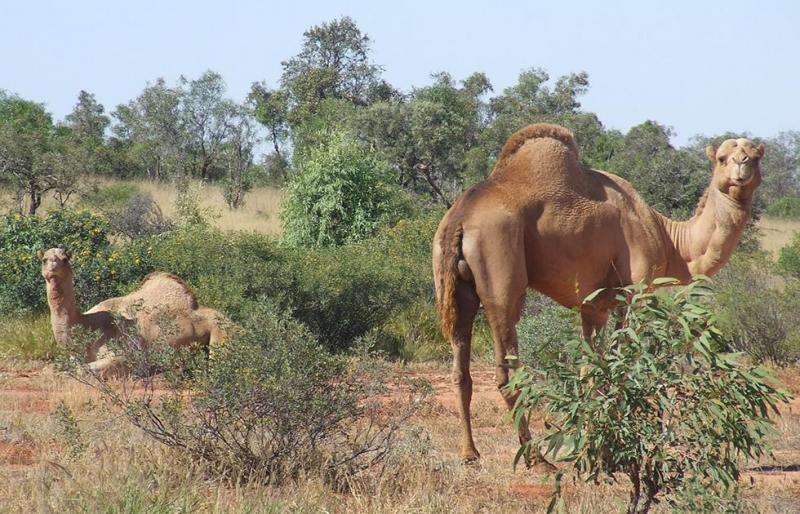Australia is home to the world’s only population of wild dromedary camels. Credit: Arian Wallach
It's hard to imagine an Australia ruled by hippopotamus-sized wombats (Diprotodon) and three-metre-tall kangaroos (Procoptodon golian). The continent lost all native megafauna to the Pleistocene extinctions, tens of thousands of years ago.
Remarkably, however, eight species of introduced megafauna now call Australia home and some of them are "rewilding" modern ecosystems, new research has found.
These include animals on the Red List of Threatened Species, compiled by the International Union for Conservation of Nature (IUCN), such as one of the largest populations of endangered wild horses (Equus ferus caballus) and the world's only population of wild dromedary camels (Camelus dromedarius).
Dr Arian Wallach and Dr Daniel Ramp from the UTS Centre for Compassionate Conversation, along with researchers from Arizona State University and Oregon State University, say the research challenges fundamental ideas surrounding "invasive" species and conservation.
The global study, published in Ecography, identified that of the world's 76 existing megafauna species, 22 have introduced populations. Of these introduced populations, almost half are either threatened or extinct in their native ranges.
"The global decline of megafauna is being driven by habitat loss, changes in land use and overhunting. Despite this, some megafauna have found refuge in new habitats through introductions," says chief investigator Dr Wallach.
The team, led by Arizona State University's Erick Lundgren, has also found introduced megafauna can contribute unique ecological functions, some of which may have been lost since the late Pleistocene.
"As large herbivores, these introduced species can consume plant matter indigestible to smaller herbivores, which may reduce fire frequency, accelerate nutrient cycling and shape plant communities," Lundgren says.
In North America's Sonoran Desert, wild donkeys are now digging groundwater wells more than a metre deep. These holes provide a much-needed water source for at least 30 species of mammals and birds, as well as germination nurseries for river vegetation. Critically endangered in its native range, the wild donkey has clearly found refuge and is contributing to ecosystems in its introduced range, says Lundgren.
Many existing populations of megafauna are either endangered or extinct. Conservation historically overlooks such populations, assuming anything "introduced" is "alien" or "invasive". Lundgren and his team, however, suggest such populations are critical buffers against extinction and may have a positive impact on their new homes.
"What this study shows is that the world is much wilder than we often think," says Wallach.
"The question is whether we are willing to allow it to be."
Journal information: Ecography
Provided by University of Technology, Sydney
























